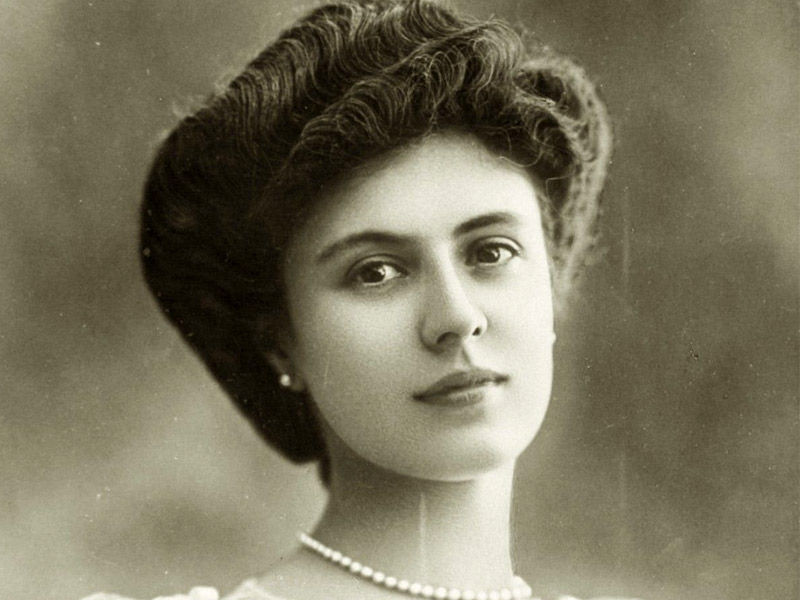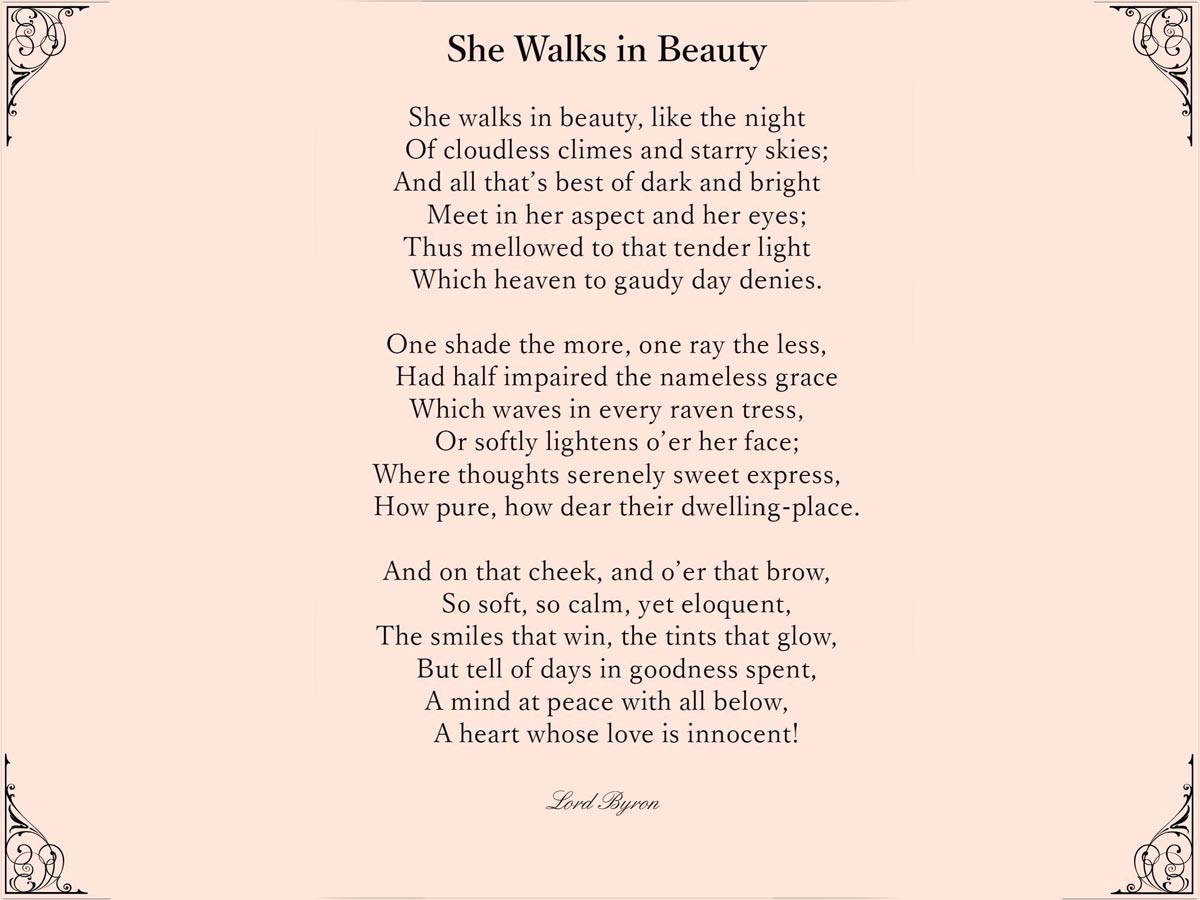One of the most famous poems of Lord Byron, a renowned romantic poet of the second generation, is She Walks in Beauty. Lord Byron led a controversial life and was a man of great esteem, too. His views on romanticism were way more different from others. His romanticism has deviated from the essence of real romantic essence. However, he is best known for his epic, “The Child Harold’s Pilgrimage”. In his poetic career, Lord Byron wrote several satires. Lord Byron is one of the most distinguished Romantic poets among other Romantic poets in history.

‘’She Walks in Beauty” is a well-known poem by Lord Byron and was first published in the year 1815. The poem is written by Lord Byron in the beauty’s praise of a particular woman. It is considered that this woman is none other than Mrs. John Wilmot, whom Dryden saw on a party night, and eventually, he wrote a poem praising her beauty after returning from that party.
The poem, “She Walks In Beauty”, impressively combines romantic essence and sensuousness, where Byron transcends his subjective emotions through the external objects of nature.
The poem has perfect and great use of beautiful literary devices, including simile, wits, alliteration, and conceited imagery. “She Walks In Beauty” expresses Lord Byron’s praise of the external beauty of a particular woman. The expression of the beauty by Byron of that woman gets exaggerated and with the conceited imagery and wits. Use of simile in the poem, “She walks in beauty”, highlights the comparison of the spontaneous movement of a lady to the ‘night’, which is as follows, “cloudless climes and starry skies”. Using alliteration adds to the use of poetic imagery of the external beauty of a woman.
The beauty of the woman appears to be beautiful and bright as the constellations of stars twinkling in heaven. Conceits and wits in the poem exaggerate the beauty of the lady as “dark and bright” However, ‘dark and bright’ both are contradictory but perfectly resemble the beauty of the night. Byron has further highlighted the beauty of the woman that meets in her ‘eyes’ and ‘aspect’ that reflects the perfect ideal beauty with a contrast to the daylight, “heaven to gaudy day denies”.

Long with this, Byron continued to explain the beauty of the woman, which is perfectly balanced and perfect in a woman. Byron draws out the beauty of that woman from her internal nature, that is purely reflected in the physical beauty of that woman. Byron describes the beauty of the woman as, her beauty is neither “shade the more”, nor “ray the less” which could “half impair the nameless grace” and is “in every raven and trees”. These lines of Byron reflect the beauty of the woman, which is as ideal as her realm of inner heart and nature.
Also Read, The Most Beautiful Poetry by Emily Dickinson
Byron wants to express that the beauty of the woman is what she transcends sensually from her inner ideal beauty. The internal beauty of that woman is the pure source of her external physical beauty.
Byron further elaborates on the ideal beauty of the woman as divine. Byron here makes the use of anti-climax in the imagery to portray the spontaneity of the transcendence of the inner beauty to the outer beauty. This elaboration comes with the lines, “So soft, so calm, yet eloquent”. Byron states that the beauty of that woman is reflected in her cheeks and brows, and in her smile and the tints of her glow. Also, Byron tries to convey his inward gaze with the lines, “of days in goodness spent” and “her mind at peace”. This shows how her inner thoughts and feelings come out as beauty on her face.

Being a romantic poet, Byron has transcended the proper subjective flow of thoughts and emotions with the help of natural aspects to make the aim poetic expressions visible and noticeable. Hence, as a conclusion, the poem, ‘ She walks in a beauty’ by Lord Byron is a celebration of the ideal beauty of Greek in parallel comparison to the own subjective experiences of Byron.
Byron in this poem has explored well the interior nature and the internal beauty of a woman and has expounded it to the natural aspects to make the perfect balance of internal and external beauty visible. The poem reflects well the ability of Lord Byron to transcend the internal beauty for defining the physical beauty of a woman. And being a romantic poet, Byron has captured, well, the essence of romanticism as a poem.





























